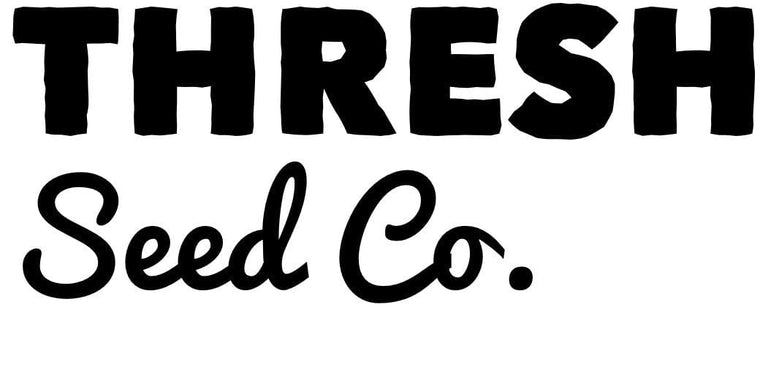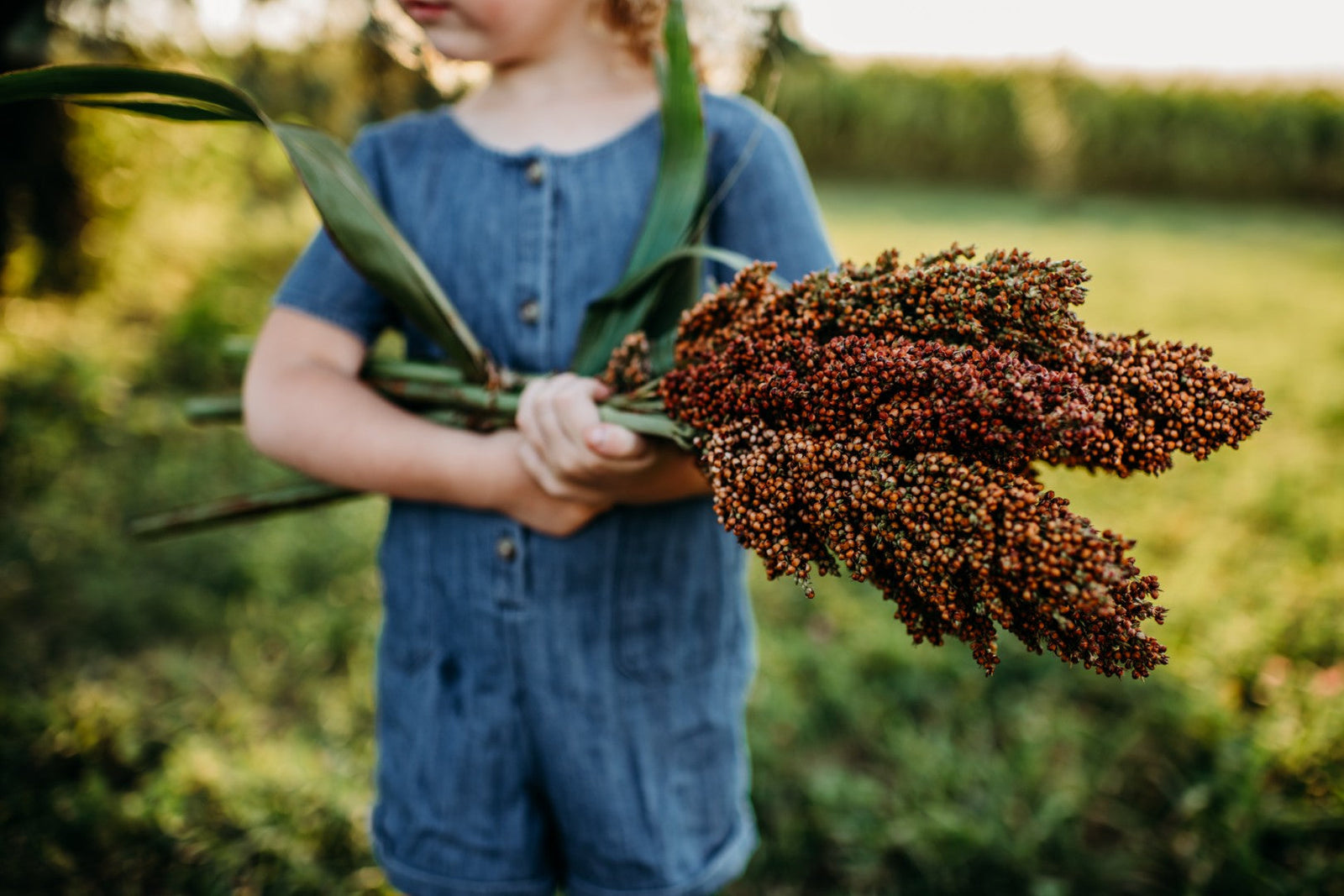Fall gardening just might hold the key to a healthier heart. "Well duh," you’re probably saying, “Doesn’t all gardening promote heart health?” Sure—gardening in any season gets you moving, lowers stress, and provides a steady stream of fresh produce rich in polyphenols, antioxidants, and other compounds that protect your cardiovascular system.
But here’s the twist: fall gardening may be especially good for your heart—if you do it the right way.
Curious? In this week's article, we're discussing some exciting new research just published in the journal Nature Communications and exploring how we, as gardeners, can utilize this information to maximize our own health (and maybe justify our gardening addiction).

Why Fall Is Different
Spring and summer gardening are all about warmth and soaking up the sun. They're great in their season. Fall gardening, though, pairs physical activity with cooler temperatures. That temperature difference is key.
You’ve probably seen the trends: cold plunges, ice baths, and cooling vests. These all share one goal—to stimulate a special type of fat tissue called brown adipose tissue (BAT), or simply brown fat. Unlike the white fat most of us associate with stored calories, brown fat is metabolically active. It burns energy to produce heat and, in the process, releases molecules that improve cardiovascular health and metabolic function.

The Science of Brown Fat and Heart Health
For years, scientists thought brown fat only mattered for babies. But in 2009, three landmark studies showed that adults have it too.
When activated by cold exposure, brown fat does more than just warm you up:
- Boosts metabolism – It burns glucose and fatty acids, helping improve insulin sensitivity.
- Releases protective molecules – One such molecule, 12,13-diHOME, rises in circulation after cold exposure and has been linked to improved cardiac function and lower triglycerides.
- Supports healthy blood vessels – People with more active brown fat have better endothelial function and lower rates of hypertension and coronary artery disease.
And here’s the kicker: a controlled study showed that just 2 hours of daily mild cold exposure (about 62°F) was enough to activate brown fat in adults and improve metabolic health. Read on—more recent studies suggest this duration may be even less.

Gardening as “Cold Exposure Therapy”
So, where’s the one place at home where time seems to pass without notice, where you can stay outside longer than you would on a random chilly walk, and where cold air is part of the experience instead of a deterrent?
For me, that place is the garden.
Think about it:
- You’re moving steadily—bending, digging, hauling, trimming.
- The cool fall air keeps you comfortable, so you don’t overheat.
- You might layer up at first, but after 15 minutes, you’re unzipping a coat or tossing your gloves aside.
All the while, your brown fat is quietly doing its work—burning calories, releasing protective metabolites like 12,13-diHOME, and helping your heart. Unlike an ice bath, you hardly notice the time pass.

How to Maximize the Benefits
You don’t need to shiver in misery to get results. The sweet spot is mild cold exposure combined with movement. Here are a few tips:
- Aim for consistency. An hour of gardening a few times a week can mimic the “dose” shown in studies.
- Layer smart. Start with a jacket but let yourself cool naturally as you work. Remove layers as needed.
- Don't sweat it. Light tasks like raking, harvesting, mulching, or planting garlic keep you outside longer without raising your core temp—just the right pace for brown fat to stay active.
- Embrace the season. Fall crops like kale, spinach, carrots, and beets not only thrive in cooler weather, they’re also nutrient-dense foods that support heart health from the inside out.
Remember, for this process to work, your skin needs to feel cool, but you should not be shivering. Layer back up if you start to get especially cold.

How Long Until Brown Fat Activates?
Brown fat doesn’t flip on the second you step into the cold—it ramps up gradually. In one study, researchers found that about 20 minutes of cold exposure (54-60°F) activated brown fat nearly as much as one full hour, suggesting BAT reaches peak activity within the first hour to hour-and-a-half (Leitner et al., Int J Obes (Lond), 2019). Interestingly, BAT was still somewhat activated an hour after rewarming.
Translation for gardeners: if you spend an afternoon or evening outside doing light, steady work—like weeding, mulching, or planting garlic—you’re giving your brown fat plenty of time to get going, without wearing yourself out.
Spice It Up: How Chili Peppers Boost Brown Fat
If the cool fall air isn’t enough to get your brown fat humming, that post-gardening bowl of chili might lend a hand. Compounds called capsaicinoids—the same ones that give chili peppers their heat—have been shown to activate brown adipose tissue as well.
In human studies, consuming capsaicin or its non-pungent cousin capsinoids (found in certain mild peppers) increased energy expenditure and fat oxidation while stimulating brown fat activity (Yoneshiro et al., Am J Clin Nutr, 2012; Saito, Adv Food Nutr Res., 2015). The effect isn’t massive on its own, but paired with cold exposure, it may enhance your body’s natural thermogenesis.
And here’s the fun part: you don’t have to look far for a source. Chili peppers are some of the most rewarding plants you can grow in the summer garden, and they store or dry beautifully for fall and winter meals. Imagine warming up after a brisk afternoon outside with:
- A bowl of chili spiced with chiles de arbol
- Jalapeño cornbread fresh from the oven
- Or even blistered shishitos with a dipping sauce
It’s one more reason to grow a few extra pepper plants each summer—because come fall, they’re not just adding heat to your plate, they might be giving your brown fat a boost too.

The Takeaway
Gardening has always been good for your health—but fall gardening may give your heart an extra edge. By combining outdoor activity with the natural chill in the air, you’re activating brown fat in a way that mimics trendy cold plunges—without the shock factor.
So next time you find yourself lingering in the cool evening air, remember—you’re not just tending your garden, you’re tending your health too. Those extra minutes outside may be doing your heart more good than you realize.
Ready to chill out with some fall vegetable gardening. Shop our full collection of cold-tolerant heirlooms and maximize the benefits of your fall garden, both inside and out.
Note: I’m a gardener, not a doctor—or at least not that kind of doctor. The information shared here is meant to inspire and inform, not replace professional medical guidance. If you have questions about your heart health or cold exposure, please talk with your healthcare provider.
Sources
- Chondronikola M et al. Brown adipose tissue improves glucose homeostasis and insulin sensitivity in humans. Diabetes. 2014. PubMed
- Cypess AM et al. Identification and importance of brown adipose tissue in adult humans. New England Journal of Medicine. 2009. PubMed
- Lynes MD et al. Cold-activated lipid metabolite 12,13-diHOME promotes fatty acid transport into brown adipose tissue. Nature Medicine. 2017. PubMed
- Raiko J, Orava J, Savisto N, Virtanen KA. High Brown Fat Activity Correlates With Cardiovascular Risk Factor Levels Cross-Sectionally and Subclinical Atherosclerosis at 5-Year Follow-Up. Arterioscler Thromb Vasc Biol. 2020. PubMed
- Saito M. Brown adipose tissue as a regulator of energy expenditure and body fat in humans. Progress in Lipid Research. 2015. PubMed
- van der Lans AA et al. Cold acclimation recruits human brown fat and increases nonshivering thermogenesis. Journal of Clinical Investigation. 2013. PubMed
- Virtanen KA et al. Functional brown adipose tissue in healthy adults. NEJM. 2009. PubMed
- Yoneshiro T, Aita S, Kawai Y, et al. Nonpungent capsaicin analogs (capsinoids) activate brown adipose tissue and increase energy expenditure in humans. American Journal of Clinical Nutrition. PubMed







